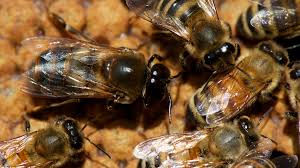Life inside the hive…
- Gerhard Pieters
- Nov 25, 2023
- 2 min read
If you ask Priscilla, my wife, if I enjoy going shopping, she will most certainly tell you:
“No, he doesn’t! I have always hated crowds around me and I easily get claustrophobic. I
guess I am not the only one out there.
But for honey bees this is life. Living in colonies, 10 000 – 50 000 honey bees, sometimes
even more, all in the same hive. Oh my gosh, I guess if I was a honey bee, I would look
for the nearest corner and just hide!
Have you ever wondered what it looks like inside a bee hive? Come, let me take you deep
inside the colony and show you a world of wonder.

Firstly, you need understand how bee colonies are made up. Honey bees are eusocial
insects, very similar to ants and termites. They live in a social origination called a “caste
system”. A caste system is a social structure where individuals within that species have
clearly defined roles and look different in appearance. However, every role is there to
benefit the colony. This means that every member of the colony lives only for the benefit
and survival of their colony and species. Teamwork at its best! How amazing is that!
In honey bee colonies, there are 3 different castes within the caste system, namely, the
queen, the worker bees and the drones. All the worker bees are female. All the drones are
male. And the queen is the only female that reproduces new bees for the colony.
Honey bees are highly evolved insects that engage in a variety of complex tasks not
practiced by the multitude of solitary insects. Communication, complex nest construction,
environmental control, defence, and division of the labour are just some of the behaviours
that honey bees have developed to exist successfully in social colonies.
The honey bees in the colony cooperate in nest building, food collection, and brood
rearing. Each member has a definite task to perform, related to its adult age. But
surviving and reproducing take the combined efforts of the entire colony. Individual bees
(workers, drones, and queens) cannot survive without the support of the colony.
The social structure of the colony is maintained by the presence of the queen and workers
and depends on an effective system of communication. The distribution of chemical
pheromones among members and communicative “dances” are responsible for controlling
the activities necessary for colony survival. Reproduction and colony strength, the quantity
of food stores, and the size of the worker force, depend on the queen.
Now that is a load of pressure being put on the “shoulders” of one lady, isn’t it? I now
know why Priscilla always says: “A woman is the heart of the home”.
What makes these caste systems so incredible to me is the fact that nature has found a
way for these animals to exist in complete harmony. These sisters don’t fight, argue or
turn their backs on each other. Their lives are dedicated to each other and their queen.
There is no “I”. Only “us”.
Do you think we as humans can achieve this level of social harmony?
Queen bee:

Drone bee:

Worker bee:

%20Transparent%20(1).png)



Comments